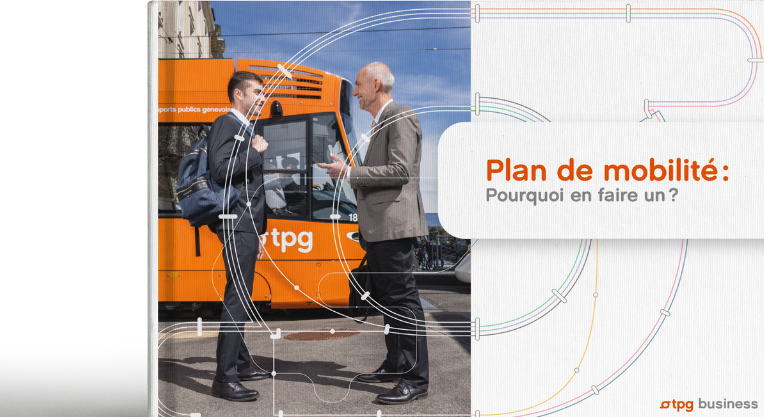Mobility Plan | Why make one?
The importance of the mobility plan for companies and institutions.
Facilitating travel is an increasingly important issue for companies. Whether it's a question of solving problems linked to motorized traffic and road congestion, or of promoting sustainable development and employee well-being, mobility plans are becoming increasingly widespread.
What is a mobility plan?
A mobility plan is a set of measures that aim to promote the use of sustainable modes of transport, such as public transport, walking, cycling and carpooling, whether for commuting or professional travel. The aim is to reduce the use of individual motor vehicles. It makes it possible to structure the approach effectively while encouraging and facilitating the change in employees' travel habits.
Why is it important to make one?
To the extent that it acts in favor of the environment and represents a public health issue (pollution), the mobility plan asserts itself as a device of collective interest.
Accelerating the prioritization of soft mobility and public transport while improving traffic flow in the city and on the urban belt is one of the major environmental concerns of the cantonal authorities. Bearing in mind that the mobility plan is already mandatory for all autonomous public or semi-public companies in the canton, it is also strongly recommended for all private companies.
Mobility plans make it possible to evaluate the actions taken to promote alternative modes of transport, such as the measurement of modal shift and the reduction of the carbon footprint. The mobility plan has become an essential and fundamental subject, which affects and concerns us all.
Serving employers, the environment and the region
Economic, social or environmental benefits: the benefits of the mobility plan are numerous. The following three pillars are fundamental to any CSR approach.
Economic dimension
A parking space can cost up to CHF 300 per month to its user, and much more to its owner (construction costs, maintenance, management, etc.). By offering alternatives to cars and parking, the company helps its staff achieve significant savings. In addition, the lack of parking spaces can be costly for the company. The implementation of a mobility plan very often responds to this shortage and makes it possible to optimize the costs related to mobility. The mobility plan also helps reduce the cost caused by car congestion (stress, fatigue, delays) and helps preserve the collective's finances, knowing that individual motorized transportation is the mode of transportation that delegates its real cost the most to the community and future generations.

Social dimension
Creating a mobility plan makes it possible to obtain an accurate mapping of mobility needs. The preliminary diagnosis represents a real opportunity to analyze employees' travel habits. The approach promotes social cohesion and equity of treatment, and contributes to improving the health of all when the use of sustainable modes of transportation, such as walking and cycling, is encouraged.

Environmental dimension
Encouraging staff to use other, more sustainable modes of transport helps reduce the number of vehicles on the city and on the urban belt. Fewer distances traveled by individual motorized vehicles means less fuel consumption, less noise and less pollutant emissions. The mobility plan is a major lever to reduce a company's carbon footprint and thus participate in the decarbonization of the territory.

Your mobility, your needs
The implementation of a mobility plan appears to be the orientation that encourages companies to think about how to rationalize and facilitate the journeys of their teams, while participating in the improvement of collective mobility and well-being.
There are several motivations that can motivate your company or institution to develop and deploy a mobility plan:
Mobility Plan: why make one?
If you still aren’t sure about the usefulness of making a mobility plan, if you don't know where to start or if your employees are unhappy with their existing mobility conditions, then this white paper is for you! There we answer essential questions, such as:
- What is a mobility plan?
- Why is it important to make one?
- What are the benefits of a mobility plan?
- How do you make a mobility plan?
Don't wait any longer to find out more! Download our white paper.

tpgEvomoov – the mobility ally of companies
As the leading public transport operator in the Geneva region, tpg is committed to offering private and public companies solutions that meet the challenges of mobility. tpg created tpgEvomoov to support companies in developing effective mobility plans that encourage a change in transport habits and enable them to take concrete action in response to the climate emergency.





